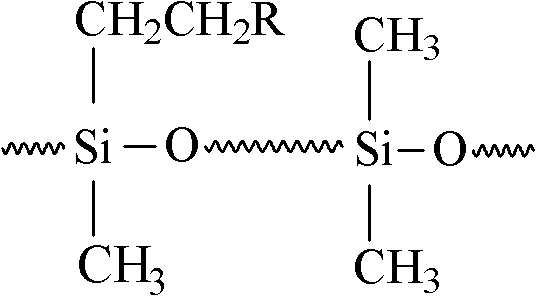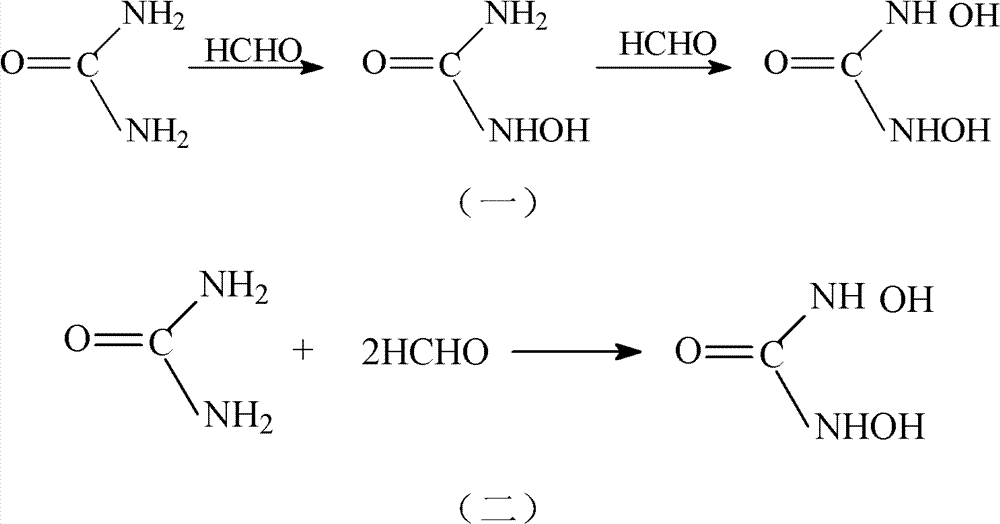Low surface energy polymer microcapsules and preparation method thereof
A low surface energy, polymer technology, applied in the direction of microcapsule preparation, microsphere preparation, coating, etc., can solve the problems of poor compatibility, no products, less research, etc.
- Summary
- Abstract
- Description
- Claims
- Application Information
AI Technical Summary
Problems solved by technology
Method used
Image
Examples
Embodiment 1
[0033] Embodiment 1: The low surface energy polymer core material adopts the fluorosilicon polymer satisfying the following formula:
[0034]
[0035] (1) Add 10 parts of urea and 35 parts of formaldehyde into the reaction flask, stir and mix, and adjust the pH of the mixture to 8-9 with 10% aqueous sodium carbonate solution.
[0036] (2) Heat the mixture in step (1) to 70° C. for 50 minutes to prepare a urea-formaldehyde resin prepolymer.
[0037] (3) Add 40 parts of fluorosilicone polymer, 1 part of Tween-80 dispersant and 250 parts of water into the dispersion container, and disperse for 10 minutes at a speed of 3000 rpm using a high-speed shear emulsifier.
[0038] (4) Add 45 parts of the urea-formaldehyde resin prepolymer prepared in step (2) dropwise into the dispersion at a rate of 20 drops / minute.
[0039] (5), after the dropwise addition, adjust the acidity of the dispersion in the above step (4) to pH 2-3 with glacial acetic acid.
[0040] (6) Heat the dispersio...
Embodiment 2
[0041] Embodiment 2: Low surface energy polymer core material adopts hydrogen-containing silicone oil
[0042] (1) Add 30 parts of urea and 50 parts of formaldehyde into the reaction flask, stir and mix, and adjust the pH of the mixture to 8-9 with 10% aqueous sodium carbonate solution.
[0043] (2) Heat the mixture in step (1) to 70°C and react for 50 minutes to prepare a urea-formaldehyde resin prepolymer.
[0044] (3) Add 60 parts of methyl silicone oil, 2 parts of Tween-80 dispersant and 300 parts of water into the dispersion container, and use a high-speed shear emulsifier to disperse at a speed of 3000 rpm for 10 minutes.
[0045] (4) Add 80 parts of urea-formaldehyde resin prepolymer prepared in step (2) dropwise into the dispersion in step (3) at a rate of 30 drops / min.
[0046] (5), after the dropwise addition, adjust the acidity of the dispersion in the above step (4) to pH 2-3 with glacial acetic acid.
[0047] (6) Heat the dispersion liquid in step (5) to 50° C. ...
Embodiment 3
[0048] Embodiment 3: low surface energy polymer core material adopts fluorinated acrylate
[0049] (1) Add 20 parts of urea and 40 parts of formaldehyde into the reaction flask, stir and mix, and adjust the pH of the mixture to 8-9 with 10% aqueous sodium carbonate solution.
[0050](2) Heat the mixture in step (1) above to 70° C. and react for 50 minutes to prepare a urea-formaldehyde resin prepolymer.
[0051] (3) Add 55 parts of fluorinated acrylate, 1.5 parts of Tween-80 dispersant and 280 parts of water into a dispersion container, and disperse for 10 minutes at a speed of 3000 rpm using a high-speed shear emulsifier.
[0052] (4) Add 60 parts of the urea-formaldehyde resin prepolymer prepared in the above step (2) dropwise into the dispersion at a rate of 25 drops / minute.
[0053] (5), after the dropwise addition, adjust the acidity of the dispersion in the above step (4) to pH 2-3 with glacial acetic acid.
[0054] (6) Heating the dispersion liquid in step (5) to 60° ...
PUM
| Property | Measurement | Unit |
|---|---|---|
| particle diameter | aaaaa | aaaaa |
| particle diameter | aaaaa | aaaaa |
| particle diameter | aaaaa | aaaaa |
Abstract
Description
Claims
Application Information
 Login to View More
Login to View More - R&D
- Intellectual Property
- Life Sciences
- Materials
- Tech Scout
- Unparalleled Data Quality
- Higher Quality Content
- 60% Fewer Hallucinations
Browse by: Latest US Patents, China's latest patents, Technical Efficacy Thesaurus, Application Domain, Technology Topic, Popular Technical Reports.
© 2025 PatSnap. All rights reserved.Legal|Privacy policy|Modern Slavery Act Transparency Statement|Sitemap|About US| Contact US: help@patsnap.com



